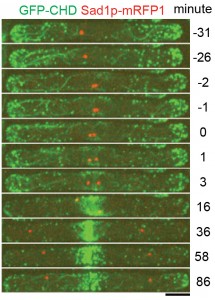
Microscopy has come a long way throughout the career of Thomas Pollard, Sterling Professor of Molecular, Cellular, and Developmental Biology. When he first started research as an undergraduate student in the 1960s, the only technique available to him was visible light microscopy. Fifty years later, his research team has developed quantitative methods that go far beyond just magnifying organisms.
While regular microscopes yield only qualitative data, Pollard’s calibrated fluorescence microscope shines light into a yeast cell and measures the amount of photons emitted back, indicating the number of molecules that accumulate and disappear during endocytosis,the process by which cells engulf molecules. As he explained, “my colleague Julien Berro, now Assistant Professor of Molecular Biophysics and Biochemistry, improved the time resolution of quantitative microscopy by taking data from different endocytosis events and lining them up precisely on the same time scale to give much better data than in any individual event. His “temporal super-resolution” method allows us to follow endocytosis with more precision than possible before.”
Pollard’s team also collaborating with Professor of Cell Biology Joerg Bewersdorf to use super-resolution microscopy to distinguish the positions of several different proteins at sites of endocytosis and cytokinesis.
These advances in microscopy provide greater insight into understanding cell processes and the structures involved in them. Their work is applicable to biological research on diverse cell types, and the next step is to see calibrated microscopes used to investigate live animal cells.
